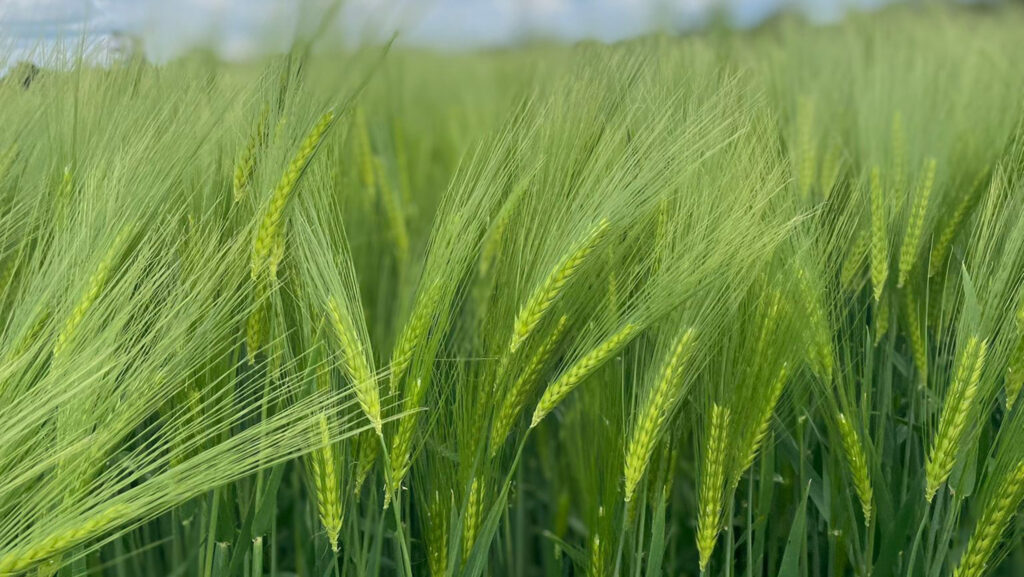Cereals 2024: Winter barley offers resistance to key virus
 © Syngenta
© Syngenta Winter barley growers have a new defence against barley yellow dwarf virus (BYDV), with the launch of the UK’s first resistant variety.
Syngenta’s Kestrel is the first six-row hybrid variety with resistance to the most prevalent BYDV variant, which is spread by bird cherry-oat and grain aphids.
Visitors to the Cereals event saw the variety, that is also resistant to other BYDV variants, as well as cereal yellow dwarf virus. This marks a big step forward, as varieties have only been tolerant to the virus until now.
See also: How to get the most from SAM2 overwinter cover crops
BYDV is “the most economically important virus in UK cereals” according to the AHDB and it can cause losses of up to 50% in winter barley and 60% in winter wheat.
Kestrel is also tolerant to a new disease threat, wheat dwarf virus, which is spread by leaf hoppers and at present found in France and the Czech Republic.
Ben Urquhart, Syngenta’s head of technical UK, Ireland and the Nordics, points out that growers could save on insecticide and qualify for the SFI no insecticide use (IPM 4) payment of £45/ha.
Kestrel is a candidate variety for the AHDB Recommended List later this year. However, farmers in high-risk situations don’t have to wait, as Ben says seed is available for drilling this autumn.
Winter wheat growers already have BYDV-resistant varieties Wolverine and Grouse, so this will provide a similar option for winter barley growers.
Agronomics
Kestrel’s UK yield is 103.1% compared to 107% for the top yielding six-row Thunderbolt. Kestrel’s yield rises to 107% in the west due largely to its score of seven for rhynchosporium resistance.
It has an untreated yield of 89% and a specific weight of 69.4kg/hl, which is slightly less than the two-row varieties such as Tardis and Caravelle.
Disease scores on a 1 to 9 scale with 9 most resistant, include a 7 for mildew and 6 for net blotch and brown rust. There is no score for ramularia at present, with a trial taking place in Scotland this season.
Ben sees Kestrel as best suited to fields with high or medium BYDV pressure, due to early drilling, having a history of BYDV, or being sited in a high-risk location, such as near woodland.
He recommends a seed rate of 200 seeds/sq m in good conditions and 250 seeds/sq m in poorer conditions, or to target grassweed competition.
Variant resistance
The new variety shows resistance to three BYDV variants, known as PAV, MAV and RPV.
- PAV is spread by bird cherry-oat aphid and grain aphid among others.
- RPV is spread by the bird cherry-oat aphid, as is cereal yellow dwarf virus.
- MAV is spread by the grain aphid.
Tolerance versus resistance
- Tolerance – plants may be symptomatic, especially in a high-pressure situation. Some viral replication takes place in plants, but tolerance does prevent the spread of the vector.
- Resistance – low level or no symptoms in the plants. Very low or no viral replication in plants. No need to use an insecticide.
How the disease is spread and symptoms
Barley yellow dwarf virus (BYDV) commonly infects crops by indirect transfer by winged aphids from grass or volunteer cereals.
Direct transfer by wingless aphids from grass or volunteer cereals that survive cultivation, can also happen.
Infections cause yellowing and stunting, initially in individual plants, which develop into distinct circular patches. These can merge to form extensive areas of infection.
The tips of upper leaves may turn red and early infections can result in plant death.

